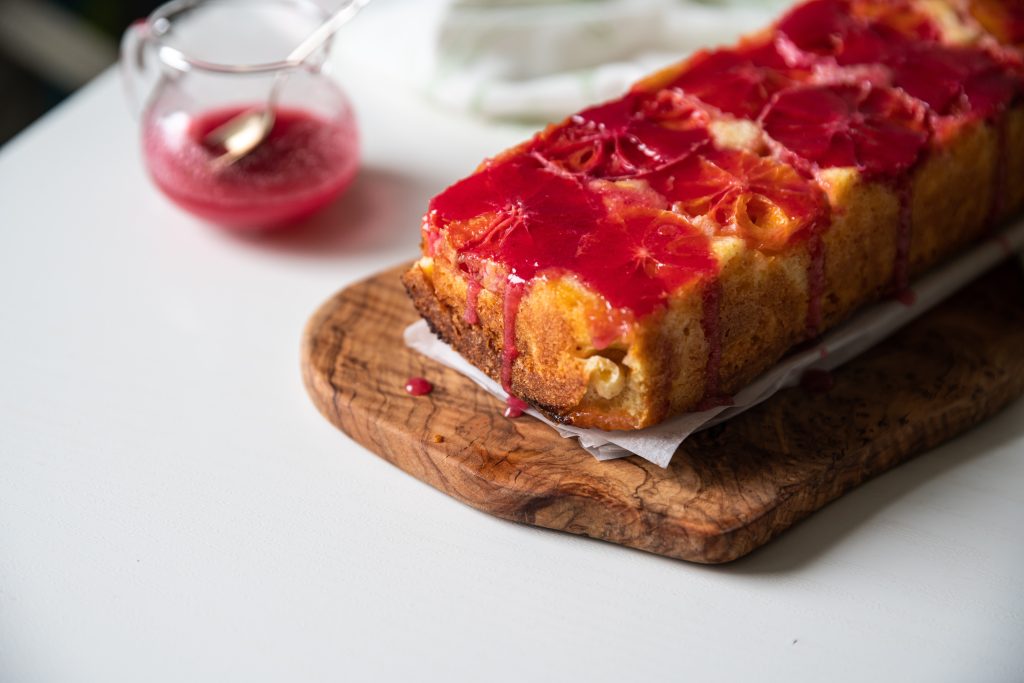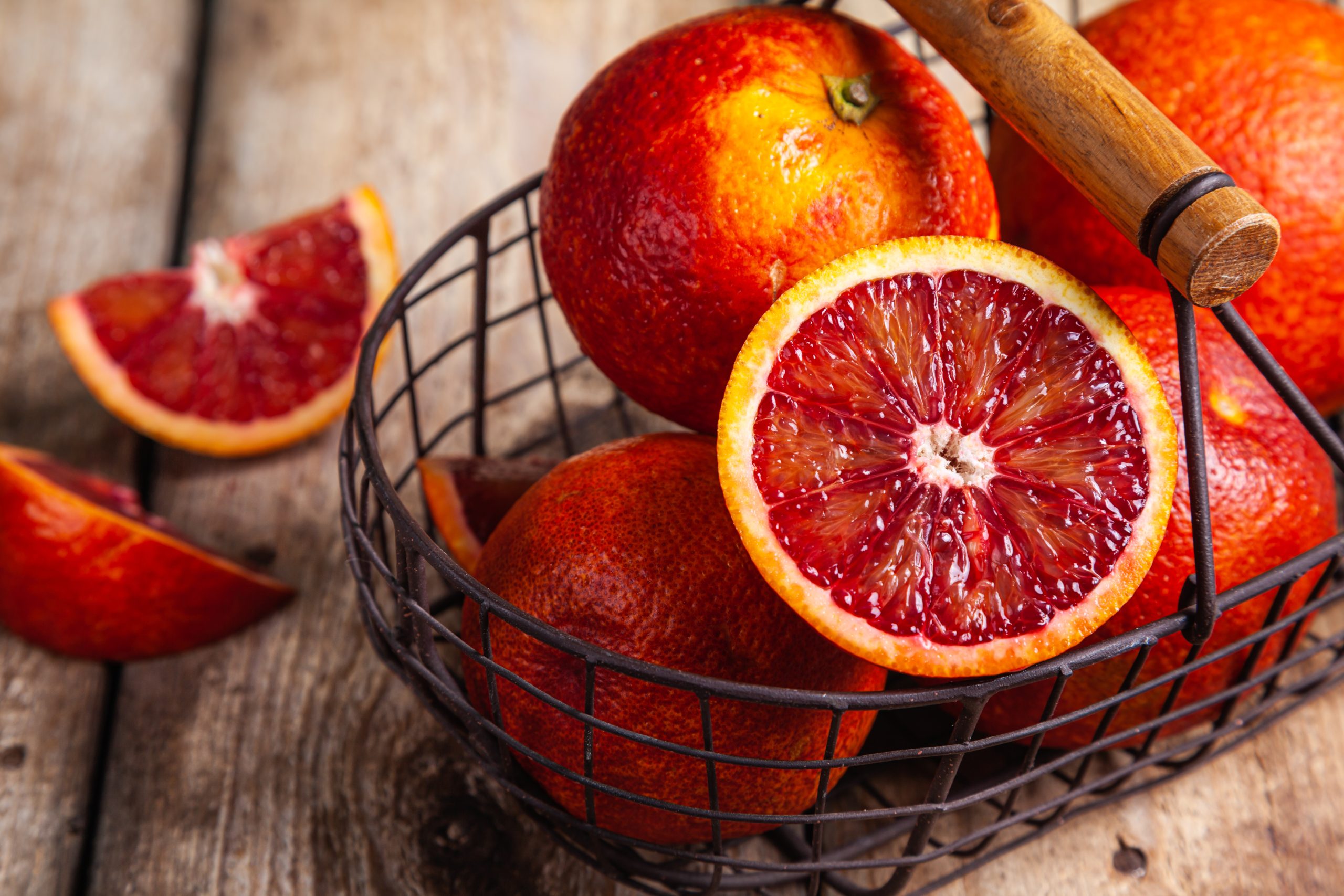While the fruit’s name might seem unsettling, blood oranges are a delicious variety of citrus originating from the Mediterranean. Their subtly sweet and floral flavors differentiate them from other orange varieties.
Table of Contents
What is a Blood Orange?
A blood orange is a citrus fruit with a deep red coloration to its flesh and an exterior appearance identical to a regular orange. Anthocyanin gives these citrus fruits their red hue when they ripen during warm days and cool evenings. They’re also sometimes known as raspberry oranges.
The three most popular varieties of blood oranges are the Tarocco, native to Italy; the Sanguinello, native to Spain; and the Moro, native to Italy.
The blood orange was first found in the southern Mediterranean in the 18th Century.
Blood oranges are typically seedless, simpler to peel, and taste sweeter than other orange varieties. Blood oranges may have a distinct flavor depending on which variety you are tasting. They taste more floral or tart and have less acidity than regular oranges.

The History of Blood Oranges
According to some historians, it was in the 18th century that the blood orange began to be cultivated along Italy’s southern Mediterranean shore.
Others speculate that Sicily’s Arab occupation in the ninth and tenth centuries led to the first known cultivation of blood oranges. Blood oranges were originally only given to royalty due to their opulent appearance and distinctive flavor. Sicilians eventually came to understand that their highly prized blood oranges could be a source of riches and started exporting them.
The fruit is now widely distributed throughout the globe. Blood oranges are still thriving in countries with Mediterranean temperatures like Malta, Spain, and Italy. The bulk of the American crop is produced in California, which has a climate similar to that of the Mediterranean, though some is also grown in Arizona, Texas, and Florida.
The red orange of Sicily, or arancia rossa di Sicilia, has Protected Geographic Status within Europe. It was first used in the Valencia in the latter part of the nineteenth century.
What Does a Blood Orange Taste Like?
Blood oranges taste similarly to other oranges, but with notes of raspberry and strawberry. Some find that they sweeter than normal oranges with a more floral flavor and a little less acidity.
Blood oranges have the same texture as normal oranges, but their segments typically contain fewer seeds. When cooked, the flavor and aroma of these fruits are enhanced, which is one reason they’re used to make blood orange marmalade, preserves, and cakes in Italy.
How to Tell When Blood Orange is Ripe
Here are some things to look for when selecting the perfect blood orange:
| Size | A mature blood orange will resemble a tennis ball in size and feel substantial in your hand’s palm. |
| Color | A fully ripe blood orange will have lost all of its greenish tint and will instead have a rich, orange-red skin tone that is complemented by a rosy blush. |
| Smell | Their scent has a familiar citrus sweetness and bitterness similar to cranberries or blueberries. |
| Weight | Look for blood oranges that feel heavy for their size. |
| Firmness | Avoid blood oranges that feel too soft or mushy, because they’re probably overripe. |
What’s the Difference Between a Regular Orange and a Blood Orange?


The antioxidant anthocyanin found in blood oranges is what sets them apart from other orange types, as its what gives them their red color. Additionally, the blood orange has a flowery tart flavor and is less tangy than a navel orange.
| Color | The blood orange gets its name from its deep ruby color. The normal orange has a more traditional orange appearance, both in terms of the skin and the juicy fruit inside. In comparison, the blood orange conceals a fruit that is a dark red color similar to blood. |
| Aroma | The aroma of a blood orange differs significantly from that of a normal orange. The blood orange is thought to be the family’s most fragrant orange, giving off hints of berries. |
| Taste | Regular oranges are more acidic than other oranges despite being juicy. In comparison, the flavor of a blood orange is sweeter and more tart. Additionally, the blood orange flesh is much juicier than the navel orange. |
Cooking with Blood Orange
Blood oranges are peeled the same way regular oranges, satsumas, mandarins, and clementines, but might need a little extra effort due to their thicker rind. Here’s our preferred method for peeling blood oranges:
- Gently press into the thick skin to puncture it, pulling it and removing the rest of the skin.
- You can also peel the blood orange with a knife or a vegetable peeler if you’re more comfortable with that.
- Once the peel is removed, simply pull apart the segments and it’s ready to eat!
Blood oranges can be consumed raw, juiced, added to fruit and vegetable salads, or used as a seasoning in countless recipes. Freshly strained blood orange juice is a customary addition to breakfast tables in Sicily.
Use blood orange in recipes that ask for regular oranges to infuse them with a sweet, complex citrus flavor that will perk up beverages, desserts, savory dishes, and snacks.

Check out a few of our favorite blood orange recipes:
- Grilled Blood Orange Chuck Steak: A flavorful and juicy sirloin is guaranteed by a robust marinade made of marmalade, soy sauce, mojo criollo dressing, brown sugar, blood orange juice, and its zest.
- Easy Blood Orange Marmalade: The freshest, most vibrant zest and sweetest, juiciest fruit of the world’s most stunning oranges are used to create a gorgeous, delectable jam. This marmalade keeps the fruit’s vibrant colors and fresh taste.
- Blood Orange Upside-down Cake Recipe: This stunning bake is the ideal use for blood oranges. Slice thinly, then carefully arrange on top to create a gorgeous, glossy cake that makes the most of these seasonal treats. All you need is some sugar, flour, baking powder, milk, eggs and some blood oranges.
- Blood Orange Bars Recipe: These blood orange bars have the ideal balance of a buttery, cake-like shortbread base and a smooth, creamy, tart, custardy top. These quick orange squares are the perfect last-minute dessert baking project because they only call for 8 basic ingredients and 15 minutes of busy preparation time.
How to Store Blood Oranges
If you intend to use your blood oranges within a few days, you can keep them on the table in a cool area. They will spoil more quickly if you wash or chop them before you intend to use them.
Keep your blood oranges in the crisper compartment of your refrigerator for the longest possible shelf life.
Nutritional Benefits of Blood Oranges
The health advantages of fresh blood oranges are numerous. They are abundant in vitamins, fiber, potassium, folate, and vitamin C, making them an excellent asset for your diet!
- Blood oranges are loaded with vitamin C, just like many citrus foods. Your immune system needs to have this nutrient to function properly and it helps to improve iron absorption.
- Blood oranges contain a lot of folates as well. This mineral is crucial, particularly for expectant mothers.
- The fiber in blood oranges is another nutritional advantage. These citrus fruits are rich in fiber and low in calories. There are two types of fiber in blood oranges: soluble and insoluble. Your digestive system benefits from both kinds.
- They have plenty of antioxidants which are well-known for preventing a variety of diseases. Antioxidants assist your body in lessening the harm caused by free radicals, which lowers the probability that cells will develop into cancer.
Where to Purchase Blood Oranges
You’ll typically be able to find blood oranges at your local grocery store when they’re in season, which lasts from December to April. Blood oranges of some types, like the Moro and Tarocco, are in season earlier than others, like the Smith Red blood orange, which is in season later. The finest months for availability are January and February, when these fruits are generally at their sweetest and tastiest.

